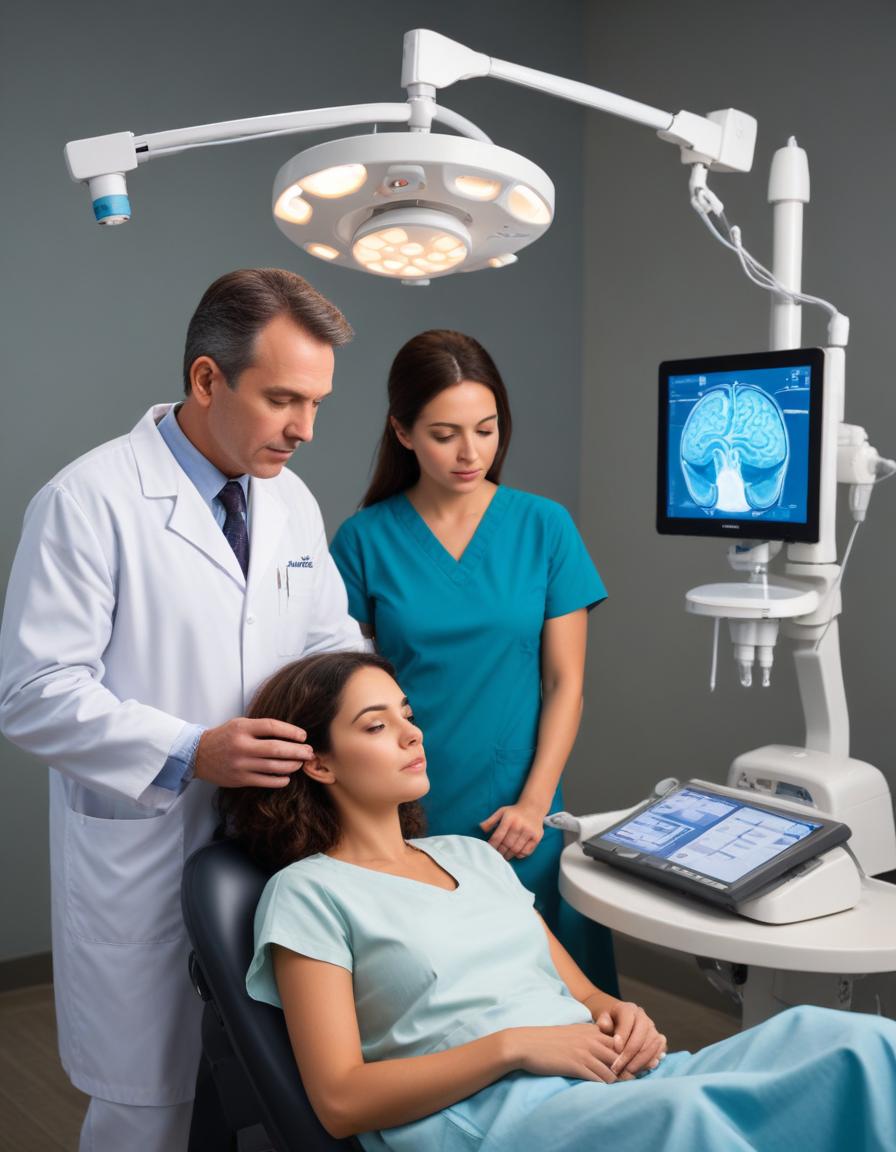Learn about TMS therapy, a non-invasive treatment for depression, anxiety, OCD, and more, with high success rates and minimal side effects.
What is TMS Therapy?
TMS, or transcranial magnetic stimulation, is a non-invasive treatment method that includes the delivery of electromagnetic pulses to targeted areas of the brain to improve symptoms of depression, anxiety, OCD, and smoking cessation (according to the current FDA indications). TMS has been around since 1985 but has more widely been used since it received FDA clearance in 2008. It is primarily used for depression, anxiety and OCD but there are off-label uses for many more conditions that are being studied such as for ADHD, PTSD, migraines, tinnitus, Parkinson’s among others. Once approved for TMS by a psychiatrist, the patient will first do a mapping session to find the correct brain location to stimulate, then they will come back to receive roughly 30 treatments (the most common protocol is one session 5 days per week for 6 weeks) that last anywhere from 3-30 minutes per session depending on the protocol and device being used. The side effects are minimal including headache or muscle twitches and in very rare cases seizures, though patients with seizure disorders are typically excluded from treatment. Currently, TMS is only indicated for adult psychiatry ages 18-70 but those ages are likely to be expanded soon.
Is TMS Effective?
Simple answer is yes. The success rates for TMS for depression range from 45-90% depending on the study being looked at. As the technology and protocols advance, the success rates are getting closer to the 90% rate such as with Stanford’s SAINT Protocol utilizing accelerated TMS. At A Better Day Psychiatry, we use a navigation guided TMS machine, the Magstim Horizon 3.0, which allows for greater accuracy and 100% delivery of pulses to the target site along with minimizing possible side effects by using the lowest effective motor threshold. The TMS machine is FDA-indicated for depression, anxiety with depression, and OCD, and it can use the latest innovative protocols to achieve the higher rates of success through accelerated TMS as described above, iTBS (theta burst stimulation), and rTMS (repetitive TMS).
TMS Therapy for Depression
To treat depression, we most often target the left dorsaolateral prefrontal cortex (DLPFC) to stimulate this area of the brain to improve depression symptoms. Studies show that people with depression often have decreased activity in the left DLPFC and by activating this area it leads to improvements in other areas of the brain that play a role in mood through extensive connections with the amygdala and anterior cingulate cortex. At ABD, we now offer TMS as an additional depression treatment option.
TMS Therapy for Anxiety
To be considered “on-label” and therefore covered by insurance, to treat anxiety with TMS you must be diagnosed with Major Depressive Disorder with Anxious Distress or “Anxious Depression.” This seems like nitpicking but for insurance purposes, you need to have a depression diagnosis to also treat the anxiety rather than using TMS just for an anxiety disorder with depression. That being said, for anxiety, we also will target the DLPFC. At A Better Day Psychiatry, we will often treat both the depression and anxiety in one sitting through TMS by altering the protocols. We are excited to add TMS as an additional anxiety treatment option.
TMS Therapy Effectiveness: How to Get the Most Out of It
In a Session
During a TMS session, you want to stay awake and alert to keep your mind engaged. It can be helpful to have a conversation with someone or stimulate your mind towards learning or being engaged in an activity such as drawing, puzzles, listening to stimulating music, reading or watching an exciting show. The main thing you want to avoid is napping during treatment!
Outside of Your Session
Outside of your TMS sessions, you want to continue your regular treatments including medications, therapy, mindfulness, breathing exercises, etc. It is best to get a good night’s rest before sessions if possible so maintaining good sleep hygiene and exercise can be beneficial during treatment. Eating a balanced diet, avoiding too much sugar, hydrating, and caffeine can help you stay awake and alert in the sessions. Lastly, at ABD we will be tracking your response to treatment through rating scales and regular check ins with your provider.
TMS Therapy Reviews
What Patients Say
To see how impactful TMS can be, see these patient story videos at the bottom of our TMS page.
What Our Psychiatrists Say
We often see patients within our own practice or who are being referred from other providers in the community who find medications for depression and anxiety are either not working or to address their symptoms or the side effects are too burdensome, and having a non-invasive, non-pharmacological approach with equal to better efficacy than medications to treat these disorders is very exciting. At ABD we pride ourselves in taking a holistic, patient centered approach and we feel TMS is one more great treatment option we can offer our patients.
Our rates at ABD are found on our TMS Page. We also offer payment plans as well as financing options. Book a consultation today if you would like to learn more.

